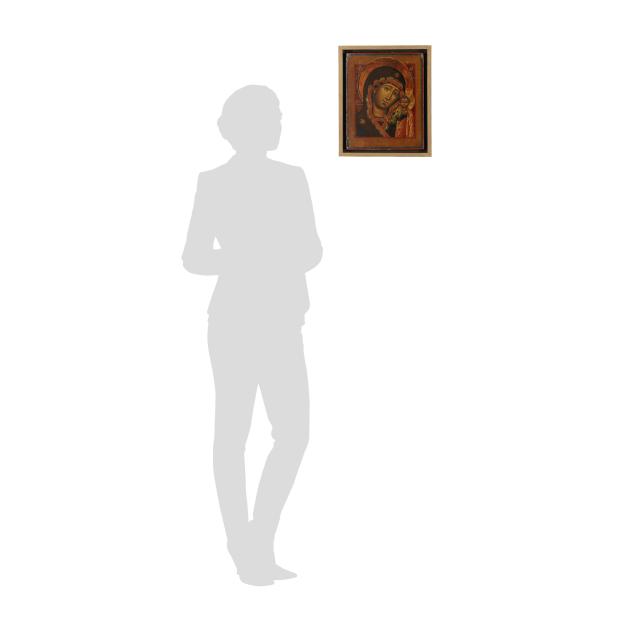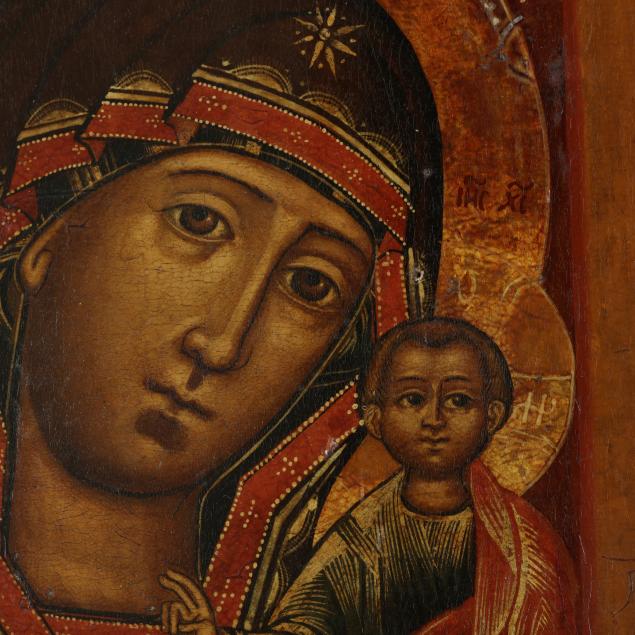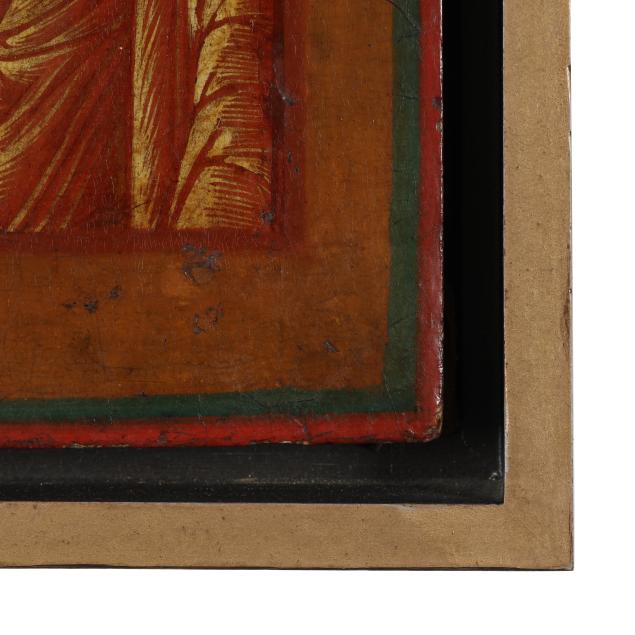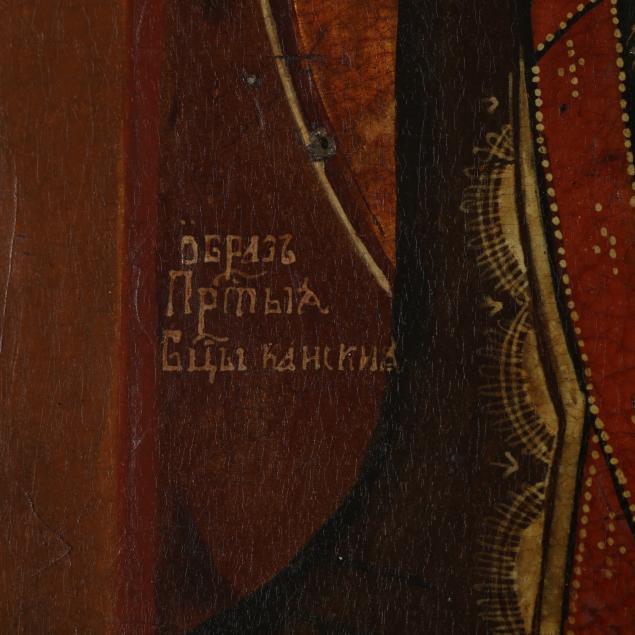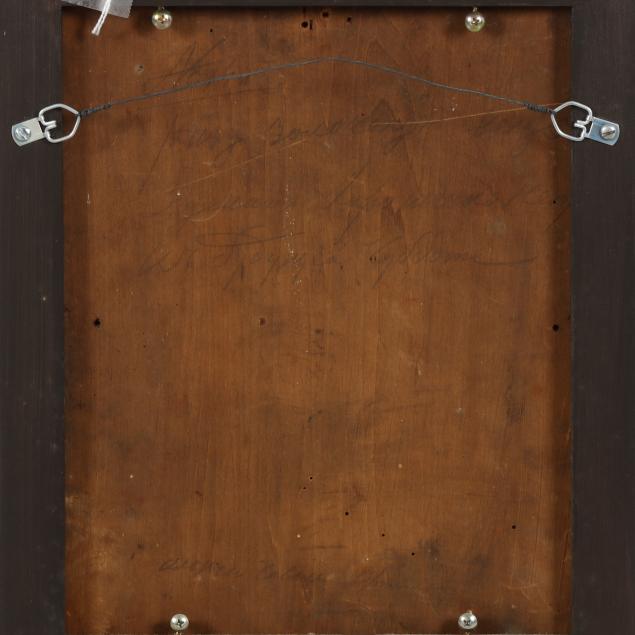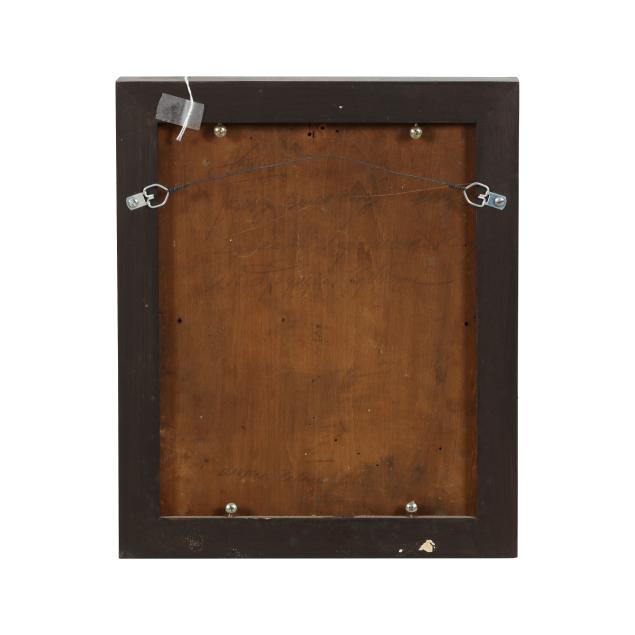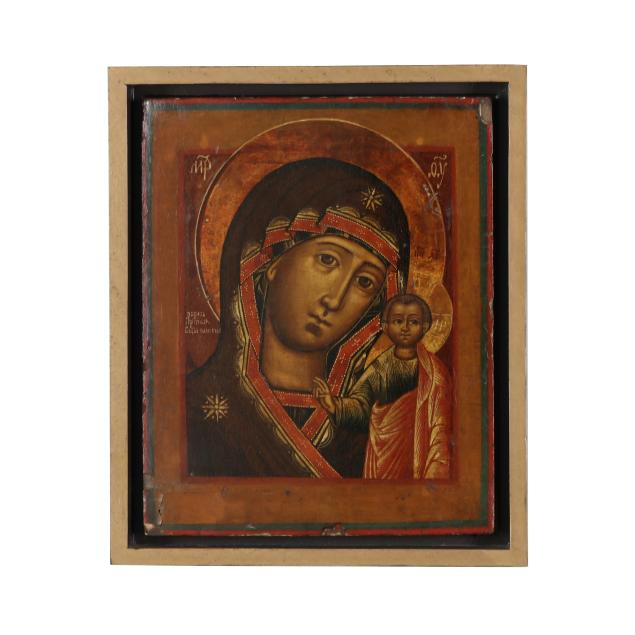
Lot 5068
Eastern Orthodox Icon, Our Lady of Kazan
Explore more items like this one.
Visit our Fine Art Department Fine Art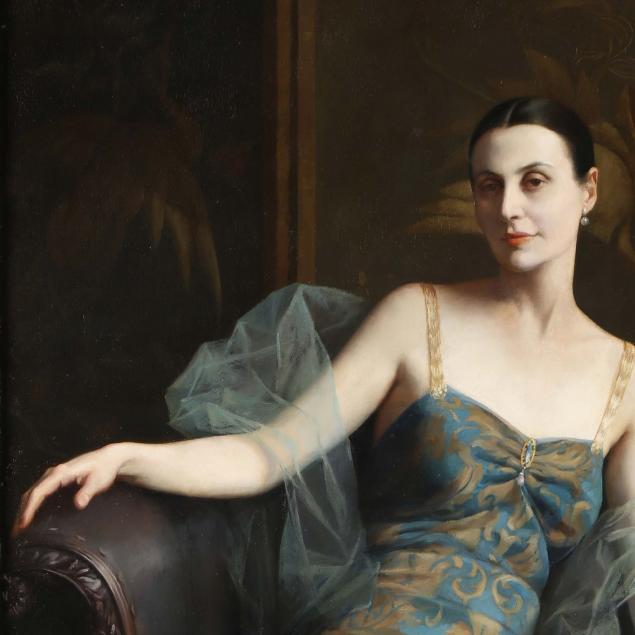
Lot Details & Additional Photographs
Panel 12 x 9 1/2; frame dimensions 13 1/2 x 11 1/4 x 2 in.
Private Collection Durham, North Carolina, previously Krakow, Poland
Found in homes as well as churches, icons are sacred objects within the Eastern Orthodox Christian tradition that illustrate scripture and remain important visual and spiritual window of the orthodox religion. The origins of the painted icon can be seen in examples from ancient Greece, Egypt and Rome. Elements were adopted and incorporated into the hand-painted panels of the Christian Orthodox traditions that we recognize as part of Slavic iconography in Russia and other areas of Eastern Europe.
The original icon of The Mother of God of Kazan is said to have come to Russia from Constantinople in the 13th century. The icon disappeared after the Tatars besieged the city of Kazan in 1438, and reappears again in the 16th century. The Mother of God appeared in a prophetic dream to a 10-year-old girl named Matrona after a fire destroyed Kazan in 1579, indicating the location of where to find the precious icon. After having the dream a third time, the girl and her mother dug deep in the earth and found the icon buried under the ashes of a house where it had been hidden decades earlier to save it from the Tatars. Thousands of people flocked to the spot where the icon was discovered and a neighborhood parish priest took the icon to a nearby church. The icon, which became the object of popular devotion and was considered miraculous, was then taken from Kazan to Moscow. The veneration for the icon of Our Lady of Kazan gained momentum during the 17th century when the Romanov dynasty came into power, rising to fill the role of protector of Russia against invaders.
Some scattered edge chips and some surface abrasions to interior painted icon; a few small holes around the halos and neckline of the Holy Mother may indicate the piece once had further decoration;
